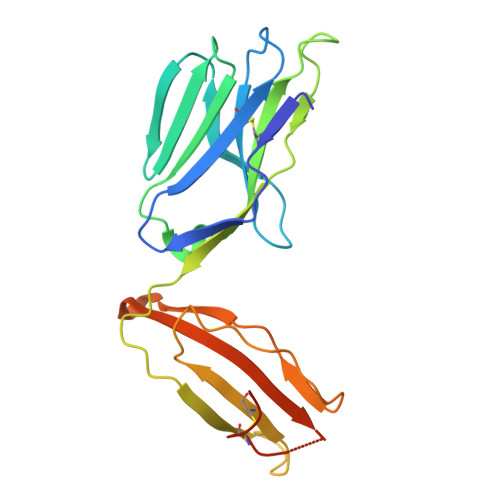Determining T-cell receptor binding orientation and Peptide-HLA interactions using cross-linking mass spectrometry.
Powell, T., Karuppiah, V., Shaikh, S.A., Pengelly, R., Mai, N., Barnbrook, K., Sharma, A., Harper, S., Ebner, M., Creese, A.J.(2025) J Biological Chem 301: 108445-108445
- PubMed: 40154610
- DOI: https://doi.org/10.1016/j.jbc.2025.108445
- Primary Citation of Related Structures:
9GV6, 9GV7 - PubMed Abstract:
T cell receptors (TCRs) recognize specific peptides presented by human leukocyte antigens (HLAs) on the surface of antigen-presenting cells and are involved in fighting pathogens and cancer surveillance. Canonical docking orientation of TCRs to their target peptide-HLAs (pHLAs) is essential for T cell activation, with reverse binding TCRs lacking functionality. TCR binding geometry and molecular interaction footprint with pHLAs are typically obtained by determining the crystal structure. Here, we describe the use of a cross-linking tandem mass spectrometry (XL-MS/MS) method to decipher the binding orientation of several TCRs to their target pHLAs. Cross-linking sites were localized to specific residues and their molecular interactions showed differentiation between TCRs binding in canonical or reverse orientations. Structural prediction and crystal structure determination of two TCR-pHLA complexes validated these findings. The XL-MS/MS method described herein offers a faster and simpler approach for elucidating TCR-pHLA binding orientation and interactions.
- Immunocore Limited, Abingdon, United Kingdom. Electronic address: thomas.powell@immunocore.com.
Organizational Affiliation:





















